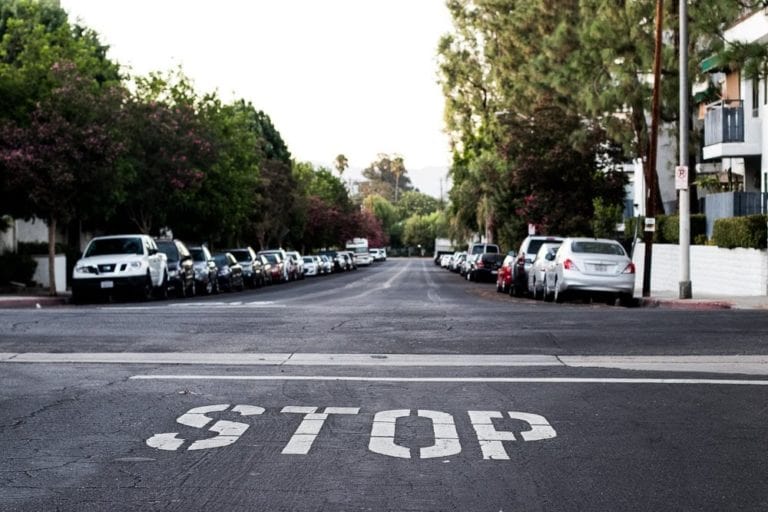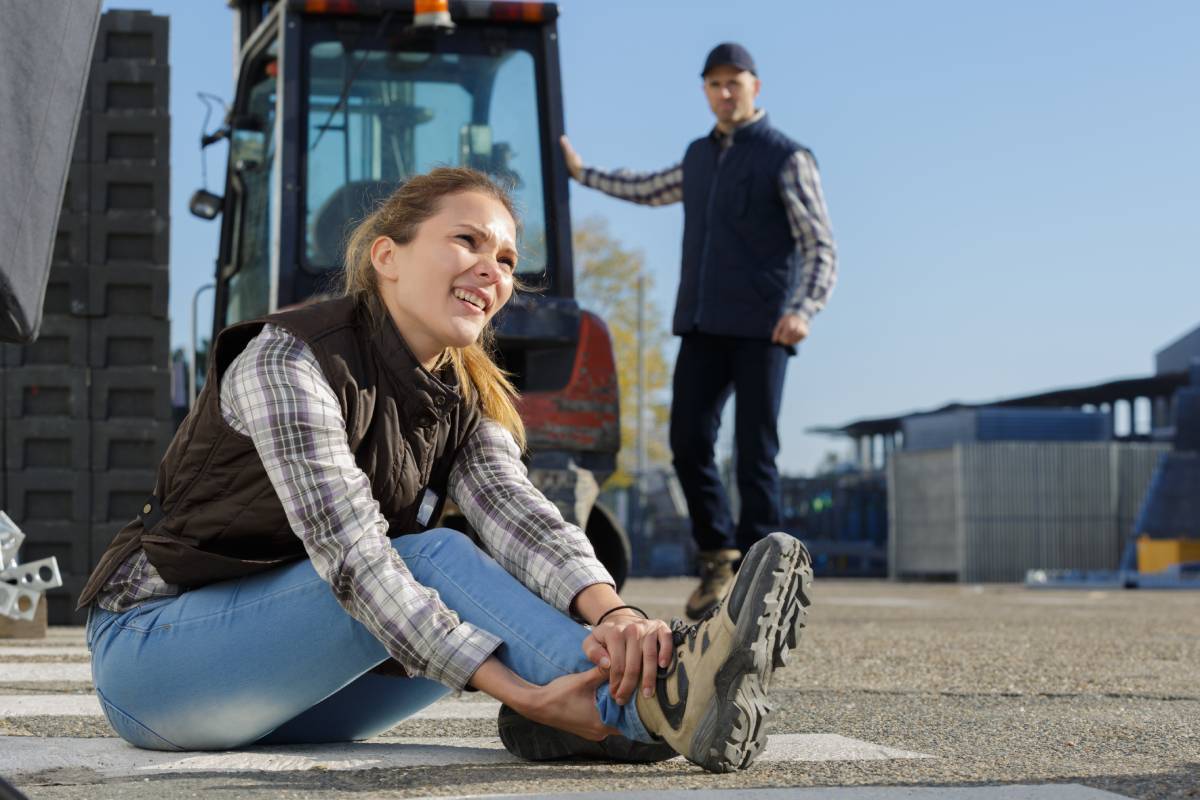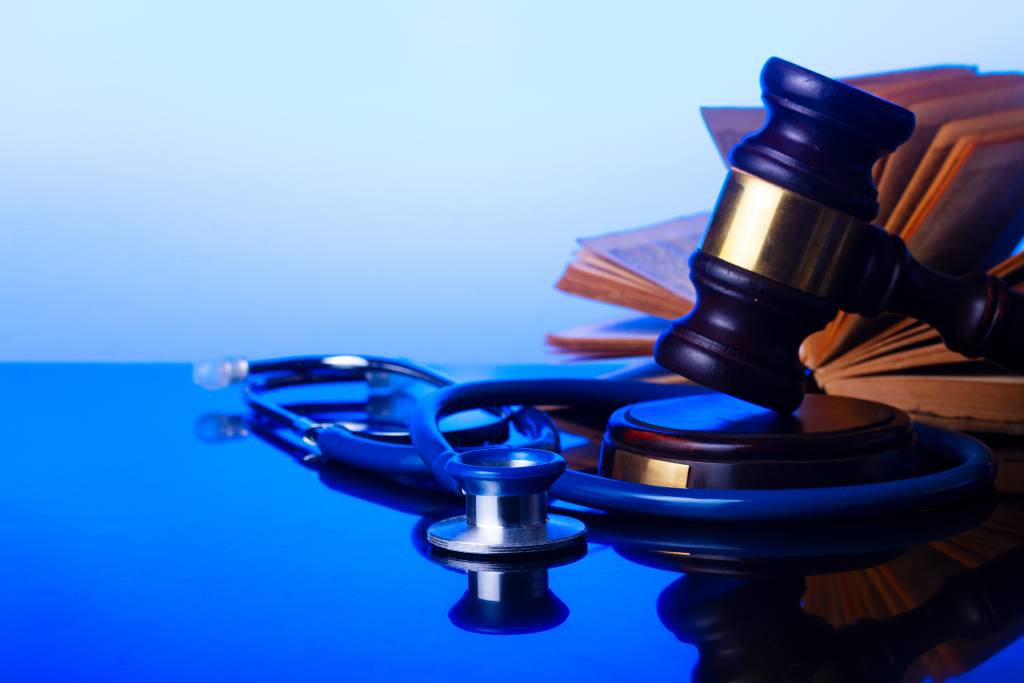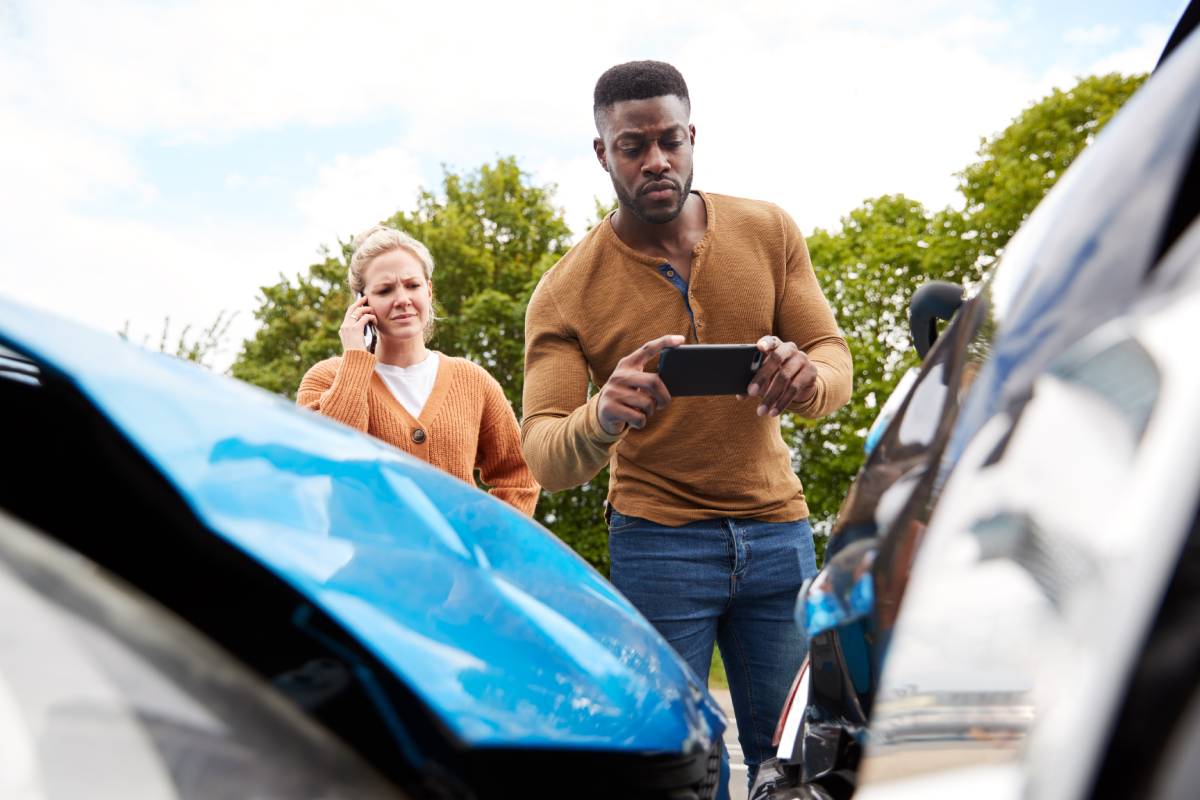Walking is the most basic form of transportation. It’s good for your health, good for the environment, and just plain economical. People are walking more these days, to get to school, work, or just for pleasure.
Sadly, when you are sharing the road with numerous motor vehicles, walking is risky. A report by National Public Radio indicates that people have been driving much less because of the pandemic, but the cars that were on the road were more likely to hit and kill a pedestrian. Although only 11 percent of travel in the U.S. is by walking, pedestrian accidents account for 13 percent of crash-related deaths.
According to recent data, seven states, including California, accounted for 54 percent of all pedestrian fatalities. In just one six-month period, for example, the Governors Highway Safety Association (GHSA) reported 485 pedestrian fatalities in California, the highest number in the U.S.
Circumstances That Contribute to Pedestrian Accidents
Many factors contribute to pedestrian accidents. Road crossings and visibility may be unsafe. Civil engineers generally plan roads with motor vehicle traffic in mind rather than pedestrians. All pedestrians are at risk, but children and older people are especially vulnerable.
The CDC reports that walkers aged 65 and older accounted for 20 percent of all pedestrian deaths and approximately 10 percent of all pedestrian injuries. Among children under the age of 15, one in five car accident victims were on foot.
Factors contributing to pedestrian accidents include:
- Crowded roads. Accidents happen more frequently on congested roadways. The National Highway Traffic Safety Administration (NHTSA) reports that in 2018, 81 percent of all fatal pedestrian accidents happened in urban areas.
- Tourism. Millions of tourists vacation in states like California each year. When driving in an unfamiliar area, many people become confused or flustered so that they make more mistakes on the road.
- Road construction. Road construction is a constant problem. Sudden shifts in lanes and detours can be unnerving for everyone on the road. Pedestrians may be trying to cross the street to get around a closed sidewalk. Drivers may have to swerve to avoid construction debris.
- Pedestrians who are out walking at night or other poor visibility conditions. From 2010 to 2019, there was a 54 percent increase in the number of nighttime pedestrian fatalities. Daytime pedestrian fatalities increased by 16 percent.
- Type of vehicle. There has been an increasing shift in motor vehicle sales from passenger cars to light trucks and SUVs. The number of pedestrian fatalities involving SUVs increased at a much faster rate than other cars.
- Device use. Devices such as Bluetooth equipment, headphones, earbuds, or cell phones pose a risk for both motorists and pedestrians.
Driving Behaviors That Lead to Pedestrian Accidents
For the protection of others, all motorists must use reasonable care. Driving dangerously increases the likelihood of an accident. The same risky behaviors that contribute to all accidents also play a part in pedestrian accidents.
These include:
- Distracted driving. Every year, distracted drivers are responsible for about 2.5 million car crashes. Typically, researchers identify three distinct forms of distracted driving. A distraction may be visual, manual, and cognitive. All of these existed before cell phones, and similar devices came on the scene. However, texting has proved to be especially dangerous because it involves all three forms of distraction.
- Impaired driving. As of 2020, about 290,000 people are injured each year in accidents involving an impaired driver.
- Speeding. Speeding is a common contributing factor to motor vehicle accidents. Approximately 55 percent of motor vehicle crashes involve speeding. Speeding reduces reaction time. The driver cannot stop as quickly, and a crash hits the individual on foot much harder.
- Driver fatigue. The effects of driving while fatigued are very similar to the effects of driving while impaired by alcohol or drugs. Fatigue negatively affects a driver’s judgment, alertness, and ability to react in time to avoid an accident.
- Not yielding the right-of-way to pedestrians. Failing to yield to pedestrians in crosswalks is one of the most common causes of pedestrian accidents. Drivers often fail to yield because they simply assume the other driver or pedestrian will give them the right-of-way. In fact, 20 percent of fatal and non-fatal accidents in California involve failure to yield.
- Not coming to a complete stop. A complete stop means that the car is completely still. This is more difficult than it sounds because people are often impatient and perform a rolling stop instead.
- Failing to signal before turning or changing lanes. Even if a pedestrian is careful and cautious, if a driver turns without using their turn signal, it may cause a crash. Actually, about half of drivers don’t use their turn signals, so a pedestrian entering a crosswalk may not know someone is planning to turn.
- Not backing up safely. National statistics indicate that about one-quarter of all collisions happen while backing up. Federal regulations now require all new cars sold in the U.S. to have rear-vision cameras and video displays to help drivers avoid accidents. Some cars also have backup warning sensors and reverse automatic braking. However, not all cars have this equipment, so it is still essential to check carefully before backing up. Small children are often killed or injured in these types of accidents.
- Disobeying or ignoring traffic signals or signs. Traffic signs and devices are there to guide and protect everyone on the road. Disregarding them puts both pedestrians and motorists at risk.
- Failure to obey school rules and regulations. Drivers must use extreme caution near schools and other places where children are congregating, playing, or walking to and from school. Drivers need to be extra careful during high traffic times, such as when school is starting or ending.
Common Pedestrian Injuries
If a car hits a pedestrian, the person traveling on foot is often seriously or fatally injured. There have been many advances in motor vehicle design and technology. However, a person riding in a car is relatively protected by the body of the car and safety devices. A pedestrian lacks these protections and is highly vulnerable when struck by a motor vehicle.
Factors such as the size of the vehicle, speed, and physical condition of the pedestrian may play a part in how badly a pedestrian is injured.
Injuries frequently sustained by pedestrians include:
- Head and brain trauma. Head and brain injuries range from minor to cataclysmic.
- Injuries to the spine or spinal cord. Such injuries are often devastating injuries, leaving the victim paralyzed or suffering other types of permanent disability.
- Internal injuries. Injuries such as internal bleeding or ruptured organs are very serious. Part of the reason they are so dangerous is that victims may be unaware they have suffered an internal injury because their symptoms are not obvious or do not become apparent until much later.
- Broken bones and pelvic injuries.
- Bruises and lacerations.
- Wrongful death.
State Laws Regarding Pedestrian Accidents
While state laws governing cars and pedestrians vary wildly, in general, motor vehicle drivers owe a duty of care to pedestrians, bicyclists, motorcyclists, and others using the road.
The California Vehicle Code, for example, provides that:
- All drivers have a responsibility to exercise due care and look out for the safety of pedestrians.
- Pedestrians have the right-of-way at most intersections. This means that drivers must yield to allow pedestrians to safely cross the street.
- Motorists may not drive on a sidewalk unless it’s needed to cross the street.
- As they approach an intersection, motorists must slow down and get ready to stop.
- Drivers must stop at least five feet from a crosswalk to allow pedestrians to cross the road.
- All motorists must yield to a blind person using their cane to signal that they wish to enter a crosswalk.
- Whenever a motorist has stopped at a crosswalk to allow a pedestrian to cross the roadway, the driver of any other vehicle approaching from behind may not overtake and pass the stopped vehicle.
- All drivers may be negligent if their failure to exercise due care causes a pedestrian accident or injury.
Responsibilities of the Pedestrian
Under California Vehicle Code Section 21954, pedestrians also have certain rights and responsibilities:
- Pedestrians have the right of way, regardless of whether they are crossing in a marked or unmarked crosswalk.
- Pedestrians must not cross the road at any place except in a crosswalk.
- If a pedestrian is crossing an intersection at any point other than within a marked or unmarked crosswalk, they shall yield the right-of-way to all motor vehicles on the road.
- Pedestrians must obey the traffic rules. However, a driver is still obliged to yield the right-of-way to the pedestrian, even if the walker is not following the rules.
- Pedestrians must walk close to his or her right-hand edge of the roadway.
Fault in Pedestrian Accidents
After taking care of the victim’s health and safety, assessing responsibility for the accident is the next concern. Pedestrian accidents are almost always the result of driver negligence. To establish liability, the injured person must prove that the driver drove negligently when the crash happened.
Establishing negligence in a pedestrian injury case requires four elements:
- The person at fault owed the victim a duty of care. Drivers must use reasonable care to avoid harming pedestrians or anyone on the road. Every accident is unique. The circumstances of each accident will determine the driver’s legal duty.
- The person at fault failed to uphold the duty of care. This can happen in countless ways. For example, the driver may have been speeding, distracted, or under the influence of drugs or alcohol.
- The negligence of the person at fault caused the victim’s injuries. Thus, the question here is whether the defendant’s actions hurt the plaintiff.
- The perpetrator’s negligence harmed the victim. What harm or losses did the victim suffer? This point is often in dispute. Records and other evidence help prove the type and extent of the losses.
In a pedestrian accident, the driver of the car is generally identified as the party at fault. However, in some cases, other parties may have played a part in causing the accident.
Examples include:
- The municipality. Hazardous conditions such as missing traffic signs, malfunctioning traffic control devices, and unsafe crosswalks, may lead to a crash. In that case, the responsible government entity may be responsible.
- A product manufacturer. If a motor vehicle designer or manufacturer produced a defective car or component, for example, if the car contained a faulty brake system, they may be liable.
- Another person or entity. A construction company may be at fault if signs and barriers were unclear or pedestrians had to detour too close to traffic.
Damages in a Pedestrian Accident
A pedestrian injured in a motor vehicle crash may be entitled to compensation or damages.
Compensatory damages typically include:
- Hospital and medical bills. This can include emergency care, as well as present and future expenses related to the injury.
- Physical and occupational therapy
- Counseling
- Lost wages and earnings. The victim may recover compensation for their lost wages.
- Loss of future earning capacity. This refers to an injured employee who cannot return to their previous job or profession and earn the same income as before the injury.
- Disfigurement or scarring
- Loss of limb
- Pain and suffering
- Loss of consortium. Loss of consortium refers to the loss of support, intimacy, and companionship between spouses and domestic partners.
- Loss of enjoyment of life
- Wrongful death
In rare cases, if the defendant’s action were egregious, the court may award punitive damages.
What Should You Do if You Have Been Injured in a Pedestrian Accident?
- Call 911. Make sure you file a police report as soon as you are physically able.
- Seek medical treatment. If you have been in an accident, the most critical step is to see a medical professional. Sometimes victims downplay their injuries or believe they are not serious, but they should still consult a doctor. Some injuries, especially internal injuries and head injuries, don’t immediately show symptoms. In addition, medical records are important evidence if you file a lawsuit.
Take photos. If you are physically able, take photos of the accident scene. Do your best to take photos of any vehicles involved, the scene of the accident, including any debris and traffic signs and signals in the area, and your injuries. Also, take note of any cameras located on nearby buildings and which may contain footage of the accident.
- Obtain contact information. Try to collect names, addresses, and phone numbers from any witnesses.
- Be cautious. After an accident, typically, everyone is upset. Those involved in the accident may be tempted to talk to anyone and everyone about what happened. Generally, it is best to avoid discussing the incident with anyone other than the police, medical responders, your own lawyer, and your insurance company. Do not post pictures or comments about the accident or your injuries on social media, as these may affect any legal claims.
- Consult an attorney as soon as possible. Do not agree to any settlement without speaking to your own attorney. A pedestrian accident lawyer can investigate your accident, determine who may bear you liability, pursue compensation for you, and review any settlements to ensure they will pay for all of your injuries.



